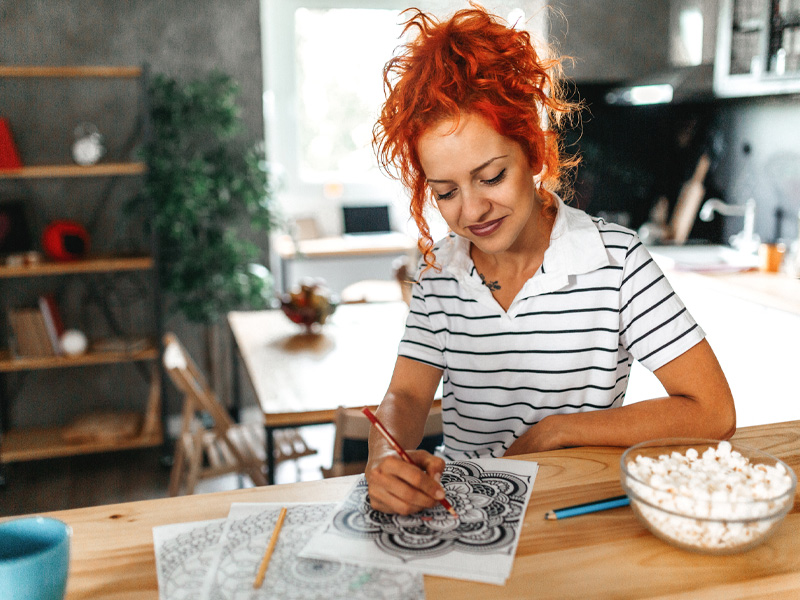How Hirameki could help lower your stress levels
This Japanese art form ‒ which translates as “flash of inspiration” ‒ has many converts, including comedian Celia Pacquola. So could it help you find inner calm?
You may have tried adult colouring-in books, meditation, deep breathing techniques and long walks in nature.
But have you heard of Hirameki?
According to psychotherapist and artist Noula Diamantopoulos, the gentle art form — which recently featured as an add-on to ABC series Space 22 — can help unlock different parts of the brain.
Noula guides Celia Pacquola, who struggles with anxiety and depression, in using Hirameki to help manage her wellbeing.
What is Hirameki?
Hirameki combines doodling with creativity but doesn’t come with strict rules, Noula says.
“It’s just a fun kind of dabbling with random shapes created by spontaneous splish-splotching, which is fun in itself, because it’s carefree,” Noula explains.
“We’re letting colours flow, drip, mix and meld.
“And then we have to use our imagination, which is where the doodling comes in.”
For example, you could take a coffee stain on a napkin, and turn it into your own artwork by adding some doodles, dots and lines.
In Celia’s case, she turned a random blob into a farting duck, and took a photo to remind herself that silliness can be a great antidote to her anxiety.
The benefits of Hirameki
Noula says the lack of control in making those initial splotches — perhaps using paint or ink — leads to less rigid thinking, and can help people consider problems in a more imaginative, new way.
Or sometimes, if you manage to get in the state of “flow”, Hirameki might provide a welcome break from thinking altogether.
Noula explains it’s all about working somatically: “You’re working through your body, using shapes and lines and colours as an expression of what the body is experiencing.”
The other thing that happens with art is that it generates neurogenesis.
“So, it creates new cells, new neurons, and we need new neurons for neuroplasticity, which is really the ability for the brain to change itself,” Noula says.
- Ikigai: Secret to a longer, happier life
Calm your mind
According to art therapist Taraka Hart, creative activities help calm the mind, in part through the repetitive, rhythmic action of your body moving — for example, when you’re colouring in.
And when you’re handling something like clay, transforming such a tactile material can be a very grounding activity.
Taraka says turning to something creative — anything from photography to writing, singing, playing guitar, dancing, or doodling — can also help improve your mood.
“If, for example, we’re depressed or anxious, or experiencing some mild stress, incorporating a little bit of creativity into our life will make our brain happy because it brings those positive hormones and chemicals,” Taraka explains.
Let it go
Had an argument with someone? Taraka suggests turning to creativity to get rid of those feelings, rather than suppressing them.
“You can just draw a cartoon of it; it can be stick figures with word bubbles, just exploring what happened,” Taraka says.
Or, grab some coloured pencils or paints and make random marks or splashes on a page.
There is a natural process of expression — it does have a beginning, a middle part, and an end.
“Just keep scribbling until that uncomfortable feeling is released,” Taraka advises.
- Nature’s way: 4 ways to soothe stress
Stuck for inspiration?
Try these therapeutic art forms:
- Neurographic art, which works with the unconscious mind through drawing
- Zentangles, in which a small, abstract work is created by a collection of patterns
- Kintsugi, the Japanese art of putting broken pottery pieces back together with gold, symbolising strength.
Written by Larissa Ham.






